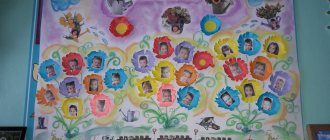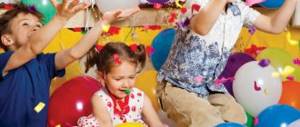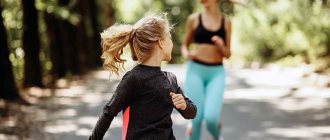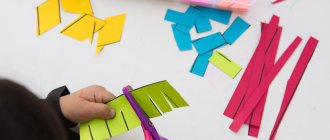April 12, 2016
Averyanova Sveta
The importance of proper breathing for health was understood in ancient times and is recognized by modern doctors. Methods of training and treating people by saturating organs and blood with oxygen were developed in Ancient China and India. In Russia, the most famous respiratory healing system was Strelnikova’s breathing exercises. What is its peculiarity and how to use it yourself will be discussed in our article.
Brief history of creation
The author of a unique method of breathing exercises that has a positive effect on the entire body is Alexandra Severovna Strelnikova. She was an opera singer. Loads on the ligaments and loss of voice were familiar to her from her line of work. To recover faster after concerts, Strelnikova came up with a special system of breathing exercises. I practiced it myself, taught it to my colleagues, and trained my daughter’s breathing, who suffered from heart disease.
The results of the training amazed the author and students. Strelnikova’s daughter recovered from the disease, one of the singer’s colleagues, Mikhail Shchetinin, got rid of bronchial asthma. Vocalists came to Alexandra Severna for help to restore their voices and learn to breathe correctly to maintain health.
In 1973, Strelnikova patented her breathing technique and published several scientific papers substantiating its positive effect on the human body. The original goal of gymnastics - restoring the voice - faded into the background.
Alexandra Severovna focused on the health-improving side of exercises for children and adults.
The development became known all over the world; Strelnikova’s gymnastics is still called not by the name of its creator, but simply by the “Russian national breathing system.”
The essence of gymnastics is to train the correct inhalation and exhalation. They differ in depth, intensity, frequency. In the process of saturating the body with oxygen, miracles happen to the body, internal organs and systems. We can say that they are reborn, begin to live anew, finally gaining the necessary amount of energy.
What is the benefit
Breathing according to Strelnikova for children and adults is not officially included in the general list of exercise therapy, but the technique has been studied comprehensively in medical centers. According to research data and from the experience of practical application of gymnastics, the following conclusions can be drawn about the benefits of exercises:
- body tone increases;
- immunity is activated;
- metabolic processes are accelerated;
- posture is corrected;
- nasal breathing is restored;
- the chest muscles are strengthened;
- oxygen exchange is improved;
- Speech disorders are easier to correct;
- vocal cords are strengthened;
- the functioning of the gastrointestinal tract and central nervous system improves;
- changes in the lungs and bronchi are eliminated;
- The number of colds and ARVIs decreases.
Breathing exercises according to Strelnikova for preschool children, adolescents, and adults have a positive effect on the treatment of certain pathologies:
- diabetes;
- bronchial asthma;
- cardiovascular diseases;
- ulcerative lesions of the stomach, intestines;
- enuresis;
- stuttering;
- adenoids;
- osteochondrosis;
- neuroses.
Strelnikova’s breathing method is used as a prevention of disorders in the functioning of organs and systems of the body and as an auxiliary therapy to drug treatment.
Gymnastics in the middle group of preschool educational institutions
Exercise can help with conditions such as:
- pneumosclerosis;
- pneumonia;
- allergic diseases;
- bronchial asthma.
The catalog of breathing exercises in the middle group implies admission to classes from 2 years old. Recommended for those who frequently suffer from acute respiratory viral infections and those with abnormalities in the respiratory system. The complex will strengthen the child’s immunity, and also make him stronger, stronger, and more resilient.
Exhale through the mouth
Important! It will be beneficial if the attending doctor selects it.
How to make a craft for a laptop about fire safety in kindergarten
Rules for conducting classes:
- Classes are carried out at temperatures from 17 to 20 degrees Celsius.
- It is best to exercise before meals.
- Exercises should be carried out as a game - this way the child will be able to adapt more easily.
- Classes should start with easy exercises, gradually becoming more difficult.
Note! Only constant implementation of correctly selected complexes will lead to the desired effect.
Comparison of breathing exercises
There are several types of respiratory systems. This is the Buteyko technique, hatha yoga and others. They are built on the following principles:
- deep breath;
- holding your breath;
- slow breathing;
- inhalations and exhalations with physical activity;
- breathing to a state of rest.
Strelnikova’s gymnastics has a number of differences from traditional methods:
| Breathing according to Strelnikova | Classic breathing exercises |
| You need to take the exact number of breaths - 96. The optimal frequency is 60-70 per 1 minute. | The respiratory rate is set individually, depending on the patient’s capabilities. The average number of breaths is 18/1 min. |
| It is necessary to increase the heart rate by increasing the number of breaths per minute, active movements of the arms and chest muscles. | The heart rate decreases or remains normal (60–70 beats per minute). |
| Inhalations are sharp, short, through the nose, exhalations are arbitrary. | Breathing is calm. Inhale deeply, exhale extended. |
| The patient's goal: to inhale at the moment of resistance of the chest muscles. | The body helps to breathe, the chest opens to the flow of air. |
Strelnikova’s gymnastics differs sharply from all others in its approach to breathing and the force of the load on muscles and organs. The singer’s system is called paradoxical, but they positively evaluate the technique based on the results of its application.
A set of breathing exercises for children from 2 to 4 years old
"Ball"
Lie on your back, both hands are placed on your stomach. Now let’s turn on our imagination and imagine that instead of our belly we have a ball. We fill it with air through the nose, inhaling slowly. Then, holding our breath, we blow out the air, exhaling through the mouth.
"Fish"
The child imagines himself as a fish in the sea and, while diving, holds his breath in order to stay under water as long as possible. Breathing is held for the maximum possible time, starting with small intervals and gradually increasing the time.
Indications and contraindications
Her colleague and student Mikhail Shchetinin studied the positive and negative effects of Strelnikova’s exercises. A list of indications and contraindications for undergoing such therapy is published in the book “Breathing Gymnastics,” published jointly with Alexandra Severovna’s daughter, Alexandra Nikolaevna Strelnikova.
Exercises are allowed and recommended for the following diseases:
- chronic sinusitis, sinusitis;
- nasal breathing disorders, chronic runny nose;
- gastrointestinal ulcers;
- adenoids (I–II degree);
- scoliosis, posture disorders;
- frequent acute respiratory viral infections, acute respiratory infections;
- chronic diseases of the bronchi and lungs;
- psychosomatic diseases;
- residual processes of tuberculosis;
- logoneuroses, ZRR.
It is not recommended to do Strelnikova exercises for children with the following pathologies:
- epilepsy;
- severe diseases of the brain and spinal cord;
- increased ocular and intracranial pressure;
- history of heart attack, stroke;
- heart disease in the stage of exhaustion, decompensation;
- fractures;
- postoperative period;
- fever with increased ESR;
- thrombophlebitis;
- osteoporosis.
Basic rules of gymnastics
You need to perform breathing exercises using the Strelnikova method, strictly observing the rules of inhalation and exhalation. The purpose of the classes: to develop the skill of properly saturating the body with oxygen.
- You need to inhale only through your nose. The air is drawn in quickly, sharply, briefly. To make the process easier, inhale loudly.
- Oxygen is sent deep.
- Inhalation is done often, every second.
- Break the Strelnikov hundred (96 inhalations and exhalations) into cycles. For children - 4 breaths, for adults - 8. That is, kids inhale 4 times every second, rest for 3-5 seconds, then continue the gymnastics again, doing a total of 24 cycles. Adults breathe 12 cycles of 8 exercises. The break is the same.
- Exhalation is done randomly through the mouth or nose. At the moment of pushing out the air, there is no need to think about exhaling. It goes away on its own.
- Simultaneously with breathing, movements are made with the arms, chest, and head. The amount of physical activity depends on the exercise and the age of the patient.
- As you inhale, the muscles should tense and resist the flow of oxygen. This is the basic rule for charging according to Strelnikova.
- As you exhale, the chest relaxes.
- You can do exercises standing, lying down, sitting.
Important! In your first lessons with children, you need to practice the skill of chest compressions. From birth, babies are accustomed to inflating their chest when inhaling. According to Strelnikova, it expands after air escapes. This is the most difficult moment, but fundamental.
A few more recommendations
- Children from 3-4 years old and adults of any age can practice gymnastics according to Strelnikova.
- Do exercises in a group, as a family.
- Regularity is the key to success. Spend 5-10 minutes exercising daily to prevent acute respiratory infections and for good health; 40 minutes each - with the goal of curing the disease, correcting spinal deformities, and improving the psychosomatic state.
- Start your workout with a warm-up.
- Play a march, a melody in the rhythm of a marching step.
- Follow the nasal breathing method in everyday life, outside of gymnastics.
Breathing problems in children
Proper breathing is very important for children, but not all preschoolers breathe correctly. Children aged 4-5 years often breathe with a shallow chest. This type of breathing fills the baby's lungs only partially and is incorrect.
Note! Breathing through the mouth is incorrect.
Sleep is one of the most important states for a person, and while sleeping, a child definitely needs nasal breathing. And also, breathing through the mouth, the baby will not receive sufficient mental development, since nasal breathing stimulates the nerve endings of all organs. In addition, this type of breathing leads to many negative consequences for the child’s health. Namely:
- attention deficit;
- increased fatigue;
- speech defects;
- decreased intensity of the chewing reflex;
- back throat infection.
Inhale through your mouth
What to do if your child is not breathing correctly
There is a way out - breathing exercises. These are specially designed exercises for the development of the child’s respiratory system. It also improves the physical condition of the preschooler. A set of breathing exercises for a child is useful for the following reasons:
- it enriches the body with oxygen;
- improves the functioning of the whole body;
- improves the child's immunity;
- strengthens the child's psyche.
Additional Information! It should be remembered that the ability to control your breathing is the ability to control your body.
Where to start classes (exercises)
Exercises according to Strelnikova for children are based on three main exercises. They need to be mastered first and then used as warm-up exercises.
"Palms"
Preschoolers stand with their arms bent at the elbows and palms facing up. You need to keep your hands in front of you.
A short breath is taken, the palms are clenched rhythmically. We suck in air 4 times noisily, actively, sharply. The fists are also clenched 4 times. We rest for 3-5 seconds, at this moment a voluntary exhalation occurs.
We repeat the series of inhalations and squeezes of the palms 24 times (4 per cycle).
"Pump"
Children imagine a tire inflator in front of them.
Stand up straight, hands down. On the count of times, we round our back, relax our neck, lower our head, and bend down.
At the same time as bending, we take a short breath, as if pumping a pump. At the moment of inhalation, you need to compress your chest, bend your back so that it interferes with the expansion of the chest muscles from the air. Inhale 4 times without stopping to exhale.
On the count of two, exhale, rise, straighten your back, relax your chest muscles. Rest for 3-5 seconds.
The cycle is repeated 24 or 12 times (8 and 4 breaths each).
"Epaulettes"
Children stand with their arms down along their bodies. You need to clench your fists. As you inhale (4 at a time), your palms sharply unclench, as if pushing something unpleasant away from you. At the same time, the arms remain positioned along the body.
After each cycle, we rest and exhale. Repeat 24 times.
Breathing exercises for children from 5 years old (methodology by A.N. Strelnikova)
- "Warm-up."
Starting position: standing, feet shoulder-width apart, torso straight, arms half bent at the elbows, fingers slightly clenched into fists, turned towards each other.
Sit down, cross your arms towards each other, inhale through your nose - active, fast, clearly audible. Return to starting position. Relax. Do not think about exhalation, do not control it with your consciousness. Repeat the exercise eight times in a row without pauses. The pace is 1-2 breaths per second, move strictly rhythmically. Repeat 10-20 times.
- "Tilts." Part one
Starting position: standing, feet shoulder-width apart, torso straight, arms down (“at your sides”).
Lean forward, lower your arms at will, slightly crossing them, inhale through your nose - quickly, clearly audible. Return to the starting position not completely - and inhale again while bending forward. Don’t think about exhalation, don’t interfere, but don’t help it either. Repeat 8 times, tempo – 1-2 breaths per second, bend strictly rhythmically. Repeat 10-20 times.
- "Tilts." Part two.
Starting position: standing, feet shoulder-width apart, torso straight, arms at shoulder level, elbows bent, fingers slightly clenched into fists, turned towards each other. Lean back, sharply cross your arms in front of your chest; inhalation through the nose is fast, active, clearly audible, but not noisy. Return to the starting position not completely - and inhale again while bending back. Repeat 8 times, tempo – 1-2 breaths per second, rhythmic movements. Repeat 10-20 times.
- "Pendulum"
Starting position: standing, leaning forward, arms down.
Rock back and forth. When you lean forward and inhale, your arms are crossed. Inhale through the nose, fast, active, clearly audible (but it should not be deliberately noisy). Rate 1-2 breaths per second. Repeat 10-20 times.
Perform these exercises with a short inhalation: do not try to take in as much air as possible, but on the contrary, inhale in volume less than possible. Be sure not to assist the exhalation. Do not move your hands far from your body.
Games and exercises
The children's version of the respiratory complex in one lesson consists of three stages:
- warm-up;
- performing basic exercises (3–4);
- games.
Here is a set of tasks for children without individual characteristics. Purpose of the lesson: strengthen the immune system, straighten posture, improve nasal breathing, create a comfortable psychological state. Additional objective for the lesson: development of speech, motor skills, physical strength and endurance.
Warm-up
Consists of basic exercises: “Pump”, “Palms” and “Shoulders”. Tasks are performed standing, in a good rhythm to the music.
Watch the pace and depth of inhalations; children exhale from the mouth or nose, as desired. For children 3–7 years old, it is enough to take 4 breaths per 24 respiratory cycles; for adolescents and adults, 8 breaths – 12 cycles.
Important! Rhythmic poems can be used instead of music. Read loudly, tapping the tempo with your palm or steps. Each step - inhale, stop (pause) - exhale.
Basic exercises
Include two or three tasks in one lesson, change their order, set them every week if you train regularly. The following exercises are suitable for preschoolers:
"Turns"
Children fix their heads straight. Task: turn your head left and right. At this time, the body remains in place, hands down. At the beginning of the turn, we inhale, when returning the head to the starting position, we exhale. We make 4 turns, then the next cycle. Rest 3 seconds between them.
"Kitty"
The child spreads his legs slightly, bends his arms at the elbows and presses them to the body. It is important to squeeze your sides so that they do not swell when you inhale. Keep your back straight.
While inhaling, we do not squat completely, slightly turn our body to the side, throw our arms forward, as if we were grabbing something. As we exhale, we stand up. We alternate turns.
"Hug your shoulders"
Preschoolers keep their hands on their shoulders, elbows parallel to the floor, to the side. As you inhale, your arms hug your shoulders, squeezing your chest with maximum force. As you exhale, we return to the starting position. The eyes should look forward, the head should not change position.
"Ears"
The kids stand with their heads straight. As you inhale, the ears approach the shoulder one by one, and as you exhale, they return back.
"Steps"
Children stand up straight. Raise one leg up, bending the knee, inhale, lower the leg and exhale. Legs need to be alternated. Hands can be kept on the belt or lowered down.
Important! For individual lessons, choose exercises taking into account the health problems of children. In group groups, do any of the suggestions.
See how wonderful the teacher is doing gymnastics with the kids in this video:
Games
Exercise, even therapeutic exercise, should be done in a fun way. Complete any of the games below. They are based on the Strelnikova method and are performed by children with great pleasure.
"Diver"
Ask the children to imagine themselves as pearl fishers, divers without an oxygen tank. They need to take in air, this must be done several times without exhaling. Inhale through the nose, briefly and noisily (2-3 times).
Then they hold their breath and dive (squat down). The one who swims out last will win.
“Collecting mushrooms” (analogous to the “Pump” exercise)
Read a poem about picking mushrooms in the forest. Children march in a circle, every time they bend over to pick up a mushroom, they inhale noisily through their nose, straighten up, and exhale. Everyone must collect 10 mushrooms.
Application in practice in preschool educational institutions
The children's respiratory system is imperfect, and the smaller the baby, the narrower the respiratory tract, the mucous membrane that lines them is very delicate, easily susceptible to inflammation, even under the influence of dust particles. The baby's need for oxygen is great, so the baby breathes quickly and shallowly. That is why it is important to include DH in the complex of health-improving physical education.
Inhalations through one nostril
Application of charging in practice:
- strengthens the muscles of the respiratory organs;
- develops sternum mobility;
- leads to a deepening and stability of the breathing rhythm.
DG promotes the full physical development of preschool children and is a preventive measure for respiratory pathologies. Also, classes help increase the excitability of the cerebral cortex and activate the children during the warm-up.
Important! Exercises in kindergarten age are aimed at increasing the overall vitality of children and the resistance, hardening and resistance of their body to pathologies of the respiratory system.
Taking notes - compiling DG complexes
When compiling DG complexes, it is important to take into account a number of important criteria:
- the effectiveness of each task for hardening and improving the health of preschool children in a preschool educational institution;
- an accessible degree of difficulty of the lesson for preschoolers of different age groups;
- the degree of influence of exercises on strengthening the respiratory muscles.
The teacher must analyze the lessons and conduct diagnostics, and for this, take notes in order to draw conclusions.
Quite rarely, breathing exercises cause negative emotions in children. On the contrary, they exercise with pleasure, bringing comprehensive benefits to the body. And this is the main advantage of DG.
Exercises for illnesses
Strelnikova’s technique is used as an adjuvant therapy for some diseases. Exercises are selected individually for each case and patient.
There are general recommendations for including tasks in a treatment course:
- Strelnikova’s breathing exercises for adenoids in children consist of the “Cat” and “Steps” exercises. Other tasks are included at the request of the child and parent.
- For asthma, shortness of breath in remission, frequent coughs, include the exercises “Pump”, “Turns”, “Hug your shoulders” into the system.
- To get rid of logoneuroses, the tasks “Hug your shoulders”, “Pump” with the simultaneous pronunciation of tongue twisters and pure tongue twisters are suitable.
On a note! To simplify the course of classes and quickly assimilate the method of performing exercises for your child, you need to download pictures, diagrams, and detailed instructions on the Internet. Have them at hand during the lesson, study and try to perform them in a calm environment before testing the method.
How can children do breathing exercises correctly?
Up to the age of five, breathing exercises for children take more of a playful form and are combined with physical and vocal exercises. Children must do this kind of play gymnastics with their parents. This will ensure complete safety of classes, and will also allow mom and dad to spend more time with the baby.
It is recommended for children to engage in full breathing exercises from the age of five. At this age, the child begins to control his breathing and evaluate his well-being. But even at this age, he must do the exercises under the supervision of his parents. You can study independently only from the age of seven.
The rules for performing the exercises depend on which technique you choose. For example, in some techniques it is considered correct to breathe through the nose, in others - through the mouth. Be sure to check this point before starting classes.
In general, there is a small list of recommendations for doing breathing exercises with children:
- the child must be calm, not angry and not too playful;
- exercises should be performed at a calm pace so that the baby does not overdo it and you can always control his condition;
- during classes you should not take sharp exhalations;
- The baby's shoulders should remain calm.
Be sure to stop exercising if:
- the child is breathing rapidly, has suddenly turned pale or flushed;
- the baby complains that his arms or legs are numb;
- The child's hands began to tremble.
Before starting classes, ask your child to talk about how he is feeling and immediately warn him if he suddenly feels unwell.






